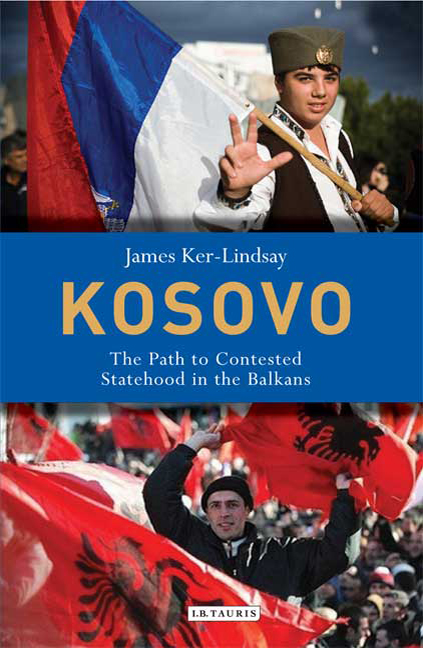Book review – Kosovo: The Path to Contested Statehood in the Balkans
Arts & Culture, Books, Features - Posted on Wednesday, August 25, 2010 23:23 - 0 Comments
By Omayr Ghani
In late August of this year twenty-six EULEX (European Union Law and Order Mission in Kosovo) vehicles were overturned, not by Serbs angry at the EU’s perceived complicity in the annexation of twenty percent of their country, but by a Kosovar Albanian protest group called Vetevendosje (Self-Determination). This was done as part of their continuing campaign for independence, something many assumed to have been granted with the withdrawal of UN troops and the Kosovar Government’s declaration of independence of 17 February 2008. Meanwhile, an EU report published in October 2009 found that the declaration (still only recognized by 53 countries, 28% of the total membership of the UN), to be illegal.
To better understand how the EU has ended up in this situation (a situation the author calls, along with a great many diplomats quoted in the book, “a mess”) Ker-Lindsay takes the reader through ninety-six years of Kosovar Albanian history; briefly describing the evolving nature of Kosovo’s status from the First Balkan war of 1912 to the build-up towards the NATO bombing campaign of the late 90s and then, in meticulous detail, describing the negotiations between the involved parties from the end of the military campaign to Kosovo’s aforementioned declaration of independence in 2008.
The formation of Yugoslavia after the Second World War and its official position as a nation of “South Slavs” (a group Albanians were deemed not to belong to) led to a curious status-quo in which Albanians, despite being the most culturally distinct ethnic group of its size in Yugoslavia, were the only group of its size not to be recognized as a nationality. Years of demonstrations, however, led to Kosovo (a region in the Yugoslav Republic of Serbia where most Albanians lived) being recognized as a province in 1974, giving its Kosovar Albanian inhabitants many rights and privileges they had not previously enjoyed but crucially not the right to self-determination. It is this ambiguous status, argues Ker-Lindsay, that the “international community (the US and EU)” “kept off the agenda” in a desire to “Keep Milosevic engaged” in the face of a non-violent Kosovar resistance, which gave rise to a “mysterious new guerrilla group”, the KLA (Kosovar Liberation Army), which in turn led to a severe backlash against Kosovar Albanians (and “the discovery of the bodies of 45 Albanians” in Racak in January 1999) that, Ker-Lindsay claims, ultimately led to the NATO bombing campaign itself, as the “international community” realised “that this [violence] might spread to neighbouring Macedonia”.
However, the idea that the US kept Kosovo off the agenda until a severe backlash against Kosovar Albanians flies in the face of widespread acknowledgment from American Intelligence officers that they had helped to train the KLA as early as 1996 and that they “wanted war in Kosovo”. Ker-Lindsay, nevertheless, does duly note that the KLA continued their attacks against Serbia to provoke a heavy-handed response so Western leaders could “act decisively” on their behalf. The claim that NATO acted on a realisation that the instability might spread to Macedonia; related to a claim made in the introduction that NATO acted “to bring the conflict in Kosovo under control” as they were “Embarrassed by their failure to prevent death and destruction in Bosnia” clearly contradicts Strobe Talbott’s (Deputy Secretary of State at the time and one of the chief planners of the war) declaration that “It was Yugoslavia’s resistance to the broader trends of political and economic reform-not the plight of Kosovo Albanians-that best explains NATO’s war”.
The book is at its best, however, when detailing and analysing, the drawn-out, and ultimately inconclusive, status talks involving the US, EU states and Kosovo on the one hand and Russia and Serbia on the other. Ker-Lindsay reveals how these arguments almost led to a complete breakdown of US-Russian relations, with Russia threatening at one point “to pull out of the Treaty on Conventional Armed Forces in Europe” as well as using the Kosovo “Precedent” to justify supporting the independence of South Ossetia and Abkhazia (similar arguments were also used by Bosnian Serbs in relation to Republika Srpska). All the while, the UN force deployed to keep the peace in Kosovo was now being targeted by Kosovar Albanians impatient with the time it was taking to reach a deal to secure their future.
The threat of a further escalation in violence resulted in further talks being called off by the US and EU, without a compromise being reached and with Kosovo eventually unilaterally declaring independence and EULUX replacing UN forces. The future of Kosovo, as Ker-Lindsay finishes the book, “has yet to be resolved conclusively”. Recent events show that resolution could still prove elusive.
Omayr Ghani, a writer and activist, is Ceasefire Magazine’s Political Editor.



Leave a Reply